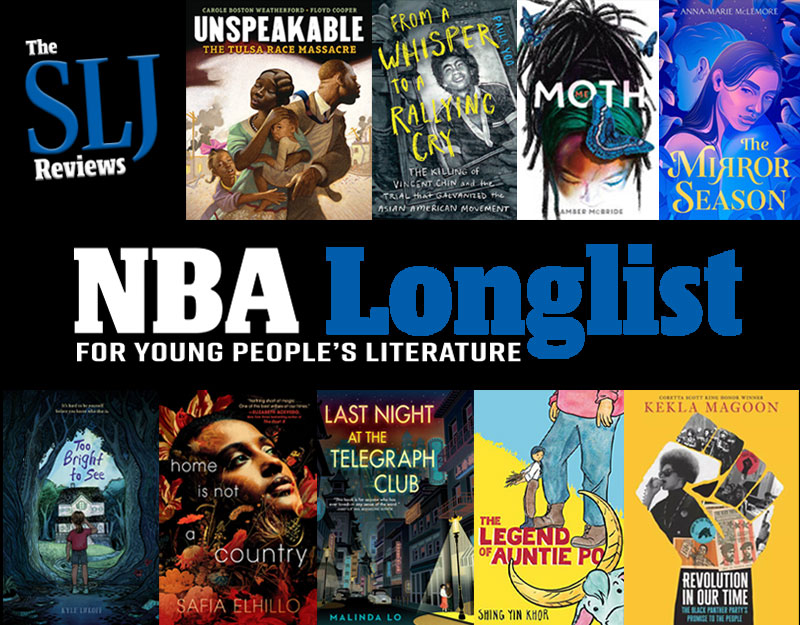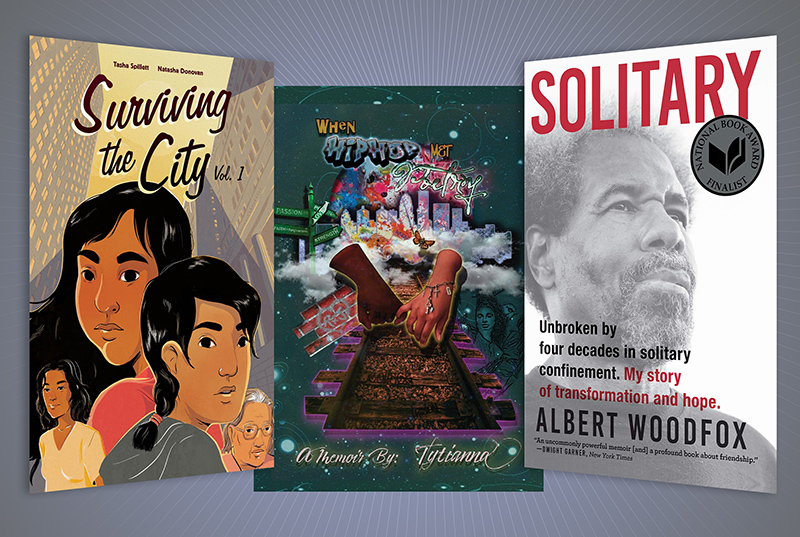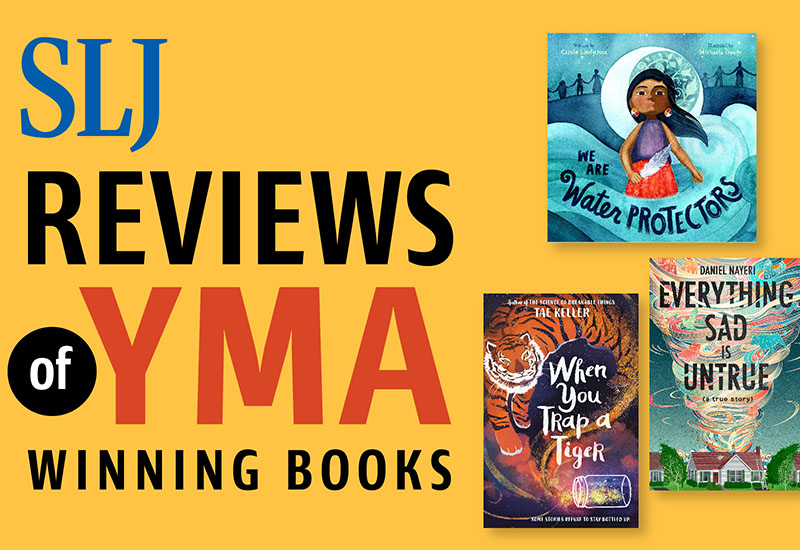Conspiracy Revisited
I first read A CONSPIRACY OF KINGS almost a year ago, and I decided to read it again this fall to see how it holds up, having read many more eligible books since then. I was even more impressed on a second reading and the book remains firmly ensconced in my top three. We’re going to get all the baggage out in the open in this post before we cover the literary elements in the next one.
THE AGE ISSUE
What are some of the factors that may indicate a book is too old for the Newbery? Well, certainly not any single thing, but several of them combined: age of the main characters, interests of the main characters (love, sex, drugs, violence, language), page and word counts, and sophistication of the narrative. Whether you compare A CONSPIRACY OF KINGS with books already in the canon or books published this year, I think it becomes very clear that A CONSPIRACY OF KINGS falls squarely and unquestionably in the Newbery range.
ADVERTISEMENT
ADVERTISEMENT
THE AGE AND INTERESTS OF THE MAIN CHARACTERS
First of all, I agree wholeheartedly with Terry Pratchett when he said that fantasy for adults and fantasy for children are a single genre; fantasy readers read indiscriminately and thus the age of the main characters isn’t such a defining characteristic in this genre. Like the Chronicles of Prydain, the age of the characters in this series is ambiguous, allowing the reader to make them any age they need to be. Certainly, Sophos is at least fourteen, young enough for a regent, but old enough to seriously consider marriage. A quick scan of the Newbery canon (THE BLUE SWORD, THE HERO AND THE CROWN, THE PERILOUS GARD, ENCHANTRESS FROM THE STARS, and PRINCESS ACADEMY) reveals similar fantasy books with young adult characters and romantic entanglements. There is no edgy content here–sex, language, or violence–so it is not unsuitable on those counts.
PAGE AND WORD COUNTS
We’ve already noted that A CONSPIRACY OF KINGS has more words, but fewer pages (76,000 words in 316 pages) than many of the leading juvenile contenders, namely COUNTDOWN, THE DREAMER, and KEEPER. But now compare it to some of the other books in the upper range of the Newbery (i.e. 7th-9th grades).
MOCKINGJAY (100,000 words in 398 pages)
SHIP BREAKER (74,000 words in 326 pages)
THE RED PYRAMID (124,000 words in 516 pages)
AS EASY AS FALLING OFF THE FACE OF THE EARTH (61,000 in 352 pages)
THE CARDTURNER (62,000 in 336 pages)
THE WATER SEEKER (65,000 in 309 pages)
A CONSPIRACY OF KINGS seems to be below average for its genre, but above average in general. You can still find plenty of books in the Newbery canon that exceed it in terms of pages and words. I’ve already mentioned THE HERO AND THE CROWN and THE DARK IS RISING, but A STRING IN THE HARP probably takes the record for both pages and words (111,000 in 370 pages) aside from THE STORY OF MANKIND (170,000 in 674 pages), of course.
THE SOPHISTICATION OF THE NARRATIVE
Make no mistake about it. Megan Whalen Turner makes demands on her readers, and she makes no apologies for it. I’m actually going to discuss these demands at greater length in the next post on literary elements, but while these demands limit the size of the audience, they do not make the book any less distinguished. And I certainly think there are Newbery precedents for this level of sophistication both within the genre (Robin McKinley, Sylvia Engdahl) and without (Virginia Hamilton, Marilyn Nelson).
NEVER THE TWAIN SHALL MEET?
But when you find all of these elements–age and interests, word and page counts, sophistication–in the same book? Well, let’s take a look at a couple of fall books, THE CURSE OF THE WENDIGO by Rick Yancey and PATHFINDER by Orson Scott Card. The former book, THE CURSE OF THE WENDIGO, is the follow-up to the Printz Honor book, THE MONSTRUMOLOGIST. It’s 448 pages, it’s got a twelve-year-old narrator, and a prose style that recalls OCTAVIAN NOTHING. The latter, PATHFINDER, is the first book in a trilogy by the popular author of ENDER’S GAME. It’s 672 pages, it’s about two thirteen-year-old boys, and mind-bending physics lie at the heart of the plot. Both books have a middle school audience. Both books are eligible for the Newbery. Put these three books on a spectrum. Does A CONSPIRACY OF KINGS seem more juvenile than THE CURSE OF THE WENDIGO and PATHFINDER? Pick your poison.
THE SEQUEL ISSUE
This book has a self-contained narrative arc that does not rely on the previous books. It is not part of a larger narrative arc (like numerous recent trilogies–MOCKINGJAY, for example), but rather an episode with shared characters (think: The Dark is Rising Sequence). This book contains the first person narrative of Sophos bookended and interluded by third person. Because this is the story of Sophos, and not Eugenedis, it should be even more clear to the reader that this book stands independently.
ADVERTISEMENT
ADVERTISEMENT
Turner does a great job of weaving any necessary exposition and backstory into the early chapters so that when Sophos and the magus reach Attolia that we already know quite a bit about the characters they meet there. For example, here is expository information from the prologue.
The king was a newcomer and a foreigner, king only by virtue of a political marriage to the queen of Attolia and still unfamiliar to most Attolians.
One and all disparaged his Eddisian background, but a few grudging supporters mentioned his rumored love for their queen in his favor.
The king of Attolia looked to the door, and then at the magus, and then at the magus’s former apprentice, the new king of Sounis.
“I think he was delighted to see you safe,” said the magus, “and grieved that the next time you meet, it must be as king and king and not as friends.”
The prologue is a tantalizing, but enigmatic lead. It’s a puzzling incident even for those of us who have read the series, and it won’t really make complete sense until later in the story. But with four simple sentences dispersed throughout the prologue, Turner has given us basic information that we need: the countries of Attolia, Eddis, and Sounis are leading players; there is animosity between the countries; the marriage between the king and queen of Attolia is widely viewed as a political alliance; and that a friendship exists between the kings of Attolia and Sounis that seems likely to complicate things. Turner will continue to supplement our basic knowledge with a morsel here, a tidbit there, and it is up to the reader to piece it together. No information dumping here, folks.
Enough with the silly nonsense! Next we’ll discuss the literary elements of the book and why this is possibly the most distinguished contribution to American literature for children. Stay tuned.
Filed under: Uncategorized
About Jonathan Hunt
Jonathan Hunt is the Coordinator of Library Media Services at the San Diego County Office of Education. He served on the 2006 Newbery committee, and has also judged the Caldecott Medal, the Printz Award, the Boston Globe-Horn Book Awards, and the Los Angeles Times Book Prize. You can reach him at hunt_yellow@yahoo.com
ADVERTISEMENT
ADVERTISEMENT
SLJ Blog Network
Name That LEGO Book Cover! (#53)
Cover Reveal and Q&A: The One and Only Googoosh with Azadeh Westergaard
K is in Trouble | Review
Fighting Public School Book Bans with the Civil Rights Act
Take Five: Middle Grade Anthologies and Short Story Collections
ADVERTISEMENT








While it’s nice to see WENDIGO mentioned in a Newbery discussion, it’s my understanding it would NOT be eligible, based on the target audience of grades 9+ (Young Adult). If I saw the book in the hands of a middle schooler, I might be tempted to rip it away to avoid irreparable harm to their psyche.
Well, I haven’t read your book, but the Newbery goes up to and including age fourteen; grade 9 is ages 14-15. Also, unlike with the Printz, no book is ruled out of the Newbery based on a target age range. Books published ostensibly for adults are eligible, for instance.
Simon & Schuster has labeled THE CURSE OF THE WENDIGO for ages 14 and up, but as Wendy suggests, the Newbery committee is not bound by publisher designations. Even if they were, the Newbery can be given for a book for fourteen-year-olds. With that said, is THE CURSE OF THE WENDIGO likely to be recognized? Highly unlikely to the point of being impossible. I bring it into the conversation to point out that there is always a discrepancy between what twelve-year-olds, thirteen-year olds, and fourteen-year-olds actually read and what the committee recognizes. For all that the committee is criticized for reaching for older books, they do tend to be pretty conservative. I think A CONSPIRACY OF KINGS is conservative enough.
And, my goodness, yes, if there are any middle school kids reading this blog, then stop reading THE CURSE OF THE WENDIGO immediately. It’s too scary and inappropriate for you! Stop!
I read Conspiracy of Kings without having read the others in the series. It was hard to follow at times and did get confusing. It felt like something was missing and it was – the background of the first three books. I admire Turner’s writing and am reading the rest of the series now. Distinguished writing? YES! Can the book stand on its own? I’m not so sure.
Martha, I do think the book can be hard to follow at times, not necessarily because of the first three books, but rather because of the amount of inference that Turner requires of the reader. I know it’s probably been awhile, but can you recall what you found confusing?
Jonathan, keeping track of all the people, battles, places and conspiracies was a bit confusing. I kept thinking, if I had read the first three I would have enough background to make this an even more enjoyable read.
I do think that keeping track of the people, battles, places, and conspiracies can be challenging. Certainly if you had read the previous books you would have spent more time with the people, but not the battles, places, or conspiracies. Getting a handle on the characters, not just who they are, but what makes them tick, without reading the previous volumes does require focus and concentration, but I think it can be done.
I’ll also say that I have read THE THIEF three times, but not since 2005. I’ve only read THE QUEEN OF ATTOLIA and THE KING OF ATTOLIA once in the year of their publication (2001 and 2006, respectively). I can’t tell you about the plots of these books because they are elaborate and intricate. My advantage, as I mention above, is my familiarity with the major characters, most especially Eugenides.
In my rereading, I noticed the points in the story that referred to the previous books. There were several times Sophos mentioned the events of THE THIEF (the theft of Hamiathes’s Gift). Any time he recalled a memory of Eugenides from the past it came from THE THIEF, but most of these memories did not exclude any readers from understanding. There were also some references to THE QUEEN OF ATTOLIA (Gen losing his hand, falling for Attolia), and a couple from THE KING OF ATTOLIA (Dites, Relius). Actually, while typing this I had to check the Wikipedia plot summaries of the books to refresh my memory, and I found that I could not only spot the allusions to the other books, but also confirmed to myself that these allusions were minor things. Martha, I’d be curious to know what you make of the Wikipedia summaries. Do they clarify things for you? Or not at all?